Staying Human in the Inhuman World of The Last of Us
Take a closer look at the influences and inspiration behind Naughty Dog's upcoming postapocalyptic survival game, The Last of Us.
A few blocks east of the Naughty Dog offices in Santa Monica is a small, side-of-the-road Japanese diner. It's an unassuming, plastic-menus kind of place: a family joint on Saturday nights and a lunchtime hangout for employees of the neighboring strip mall the rest of the time. It's not where you'd expect to see a celebrity, do a business deal, or come up with a million-dollar idea. But it's where, in the summer of 2009, Naughty Dog game director Bruce Straley and creative lead Neil Druckmann conceived the idea for The Last of Us.
Announced as a PlayStation 3 exclusive on December 10, 2011, during Spike TV's Video Game Awards, The Last of Us is the first new intellectual property from Sony-owned Naughty Dog since Uncharted: Drake's Fortune in 2007. The game follows two survivors--an adult man and a teenage girl--making their way across postapocalyptic United States 20 years after the outbreak of a deadly virus. It's a third-person action adventure that promises a darker, more adult experience than other games in its genre. It's a project that, according to its creators, will aim to push the graphical boundaries of the medium and test its storytelling potential. This last point is important. Without a good story, the game conceived by Straley and Druckmann in that side-of-the-road diner risks being lost forever.
The Mute Girl
The brainstorming sessions started as a way for Straley and Druckmann to unwind during development on Uncharted 2. Long days in the office would be followed by a nightly trip into West LA, where the pair would take up a table at the Curry House diner and problem-solve their way through the night. The discussion usually centered on what was and wasn't working in Uncharted 2, and how they could fix it. Sometimes, they allowed their imaginations to go beyond the game they were working on, pitching ideas, concepts, and scenarios they believed had potential. It was during one of these "what if" moments that The Last of Us was born.
When Uncharted 2's protagonist, Nathan Drake, finds himself in a remote Tibetan village in the Himalayas, he encounters a Sherpa named Tenzin. Tenzin doesn't speak English, so Drake initially finds it difficult to communicate with him. Straley and Druckmann originally wanted a mute girl in place of Tenzin--a decision partly inspired by Fumito Ueda's Ico--who would form a bond with Drake over the course of their time together.
 "The girl would wake you up in the middle of the night and gesture for you to follow her," Druckmann says. "She'd lead you up to this rooftop and point to the horizon, and you'd see the sun just coming up over the village, one beautiful moment against a backdrop of violence and war."
"The girl would wake you up in the middle of the night and gesture for you to follow her," Druckmann says. "She'd lead you up to this rooftop and point to the horizon, and you'd see the sun just coming up over the village, one beautiful moment against a backdrop of violence and war."
The mute girl eventually became Tenzin, but Straley and Druckmann held on to the hope that they'd get another chance to explore this idea of an unlikely bond. Halfway through 2009, following Naughty Dog's decision to branch out and work on two games simultaneously (something Druckmann says was done in order to better leverage the PlayStation 3 technology), the pair saw their chance to try again.
A small development team was handpicked from within the existing team to start work on a new project, headed up by Straley and Druckmann, as director and creative director, respectively. While the rest of Naughty Dog started work on Uncharted 3, the new team discussed the possibility of a new Jak and Daxter game, which had the benefit of being an established franchise with a large fan base. But as the team began designing concept art and 3D models, Straley and Druckmann found they just couldn't get behind the idea. So they did what any brave developer would do: they trashed the idea and moved on.
It took them six months to settle on the final design for The Last of Us. Straley and Druckmann returned to the mute girl, drawing out the concept to devise the character arcs for the game's protagonists, Joel and Ellie. (Druckmann says these arcs remained the same throughout the development cycle, the one thing that always felt right.) Next, the team had to work out what kind of world Joel and Ellie would live in, down to its size and history. They knew that they wanted the world to look beautiful and that this beauty had to contrast with an undercurrent of human suffering. It wasn't until Straley and Druckmann sat down to watch the BBC documentary Planet Earth that they discovered what that suffering would involve.
The David Attenborough-narrated series examines different communities of plant and animal life from around the world. The episode Straley and Druckmann saw talked about something called the cordyceps fungus, a species of parasite native to insects that attacks by replicating the host's cell tissue. Some strains of the cordyceps fungus are also known to alter the behaviour of their insect host to maximize the conditions of infection, which got Druckmann thinking about a similar scenario in which humans became infected with the same fungus. It seemed there was a lot to explore if this kind of outbreak were to happen: the initial panic, chaos and uncertainty, and the stuff that comes immediately after. What would civilization look like 10, 20, or 30 years on? Who would be in control? What would the cities, the highways, and the infrastructure look like? How many would die, and how would the rest survive?
"This is the kind of world that forces people into a kill-or-be-killed frame of mind," Druckmann says. "I wanted the game to show players just how easy it is for humans to descend into this state when society as we know it ceases to exist."
Druckmann studied films, books, and television shows with postapocalyptic and dystopian settings, but soon found the real world to be a much more helpful source of inspiration. In studying the 1918 Spanish flu pandemic, he learned about paranoia and man's need to protect himself when faced with the threat of extinction; the polio epidemic of the 1880s showed him how differences in class can color people's perceptions of blame in the face of a great disaster. Examining the history of human suffering also helped Druckmann answer the question of whether The Last of Us was the kind of game that needed a bad guy.
The original plan was to design a villain that would chase Joel and Ellie all the way to the end of the game, adding to the already-existing threat of infected humans and outlawed survivors. But in the end, Druckmann thought it felt forced, like the game was trying to fit into a Hollywood structure it didn't belong in. Taking his cues from history, he wanted to explore the idea that there aren't necessarily good or bad guys in situations like this; while Joel and Ellie are forced to fight for their lives, there shouldn't be anything to indicate that they are any more correct in what they do than those who attack them.
When the idea for the villain was dropped, it was replaced by a renewed motivation to further flesh out Joel and Ellie's relationship. It was Druckmann's growing belief that this, more than anything else, would make The Last of Us a success.
Making a Connection
Druckmann first came to Naughty Dog as an intern after a chance meeting with the company's former co-president, Jason Rubin. Rubin "made the mistake" of giving Druckmann his number, which Druckmann used to hound the studio head for an internship until, one year into his Carnegie Mellon master's program, he was finally granted a short stint as a programmer on 2004's Jak 3. (Naughty Dog's website now includes a warning to ward off any future Neil Druckmanns: "Sorry, no internships or student works. Please do not send us game ideas.")
Since then, Druckmann has programmed, designed, and written for Naughty Dog titles Jak X, Uncharted, and Uncharted 2. The Last of Us is his first project as creative lead, and the first thing he wants to do is show people that story matters.
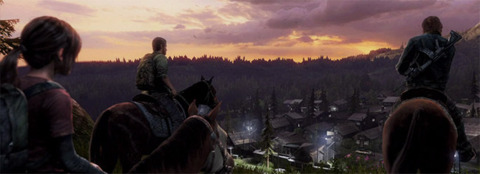
The problem with the way games are made, he says, is that 99.9 percent of them don't bother with story or character development.
"I might be engaged with a game, I might love the mechanics, but I don't care whether the characters live or die. Not every game needs a good story or good characters to be compelling, but I really do wish that storytelling was more of a focus in the industry."
He points to Hotline Miami as a good example of how things might look if done properly, saying the game made him care deeply for a character who had only a single line of dialogue. Druckmann wants more of that.
He's also a new father, which is proving more beneficial for his working life than you might imagine. On one hand, he's forced to spend more time with his virtual creations than with his own offspring, something his wife teasingly refers to as "marching off to war"; on the other, his new paternal emotions have afforded him crucial insight into the mindset of his characters. "All of a sudden I realized just how far I'd go to save my kid, things I've never ever thought about before. It's become a huge inspiration."
All his energy has gone into making Joel and Ellie the kinds of characters worth caring about. Joel, born before the outbreak, is a smuggler with no love for life under military rule. Ellie is a teenager who has been living in quarantine since she was born. For her, military rule, ration cards, and public executions are routine.
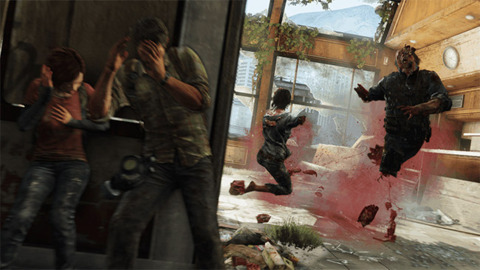
But there are problems with this relationship. Joel, haunted by memories of life as it once was, has given up hope of ever returning to it. For her part, Ellie knows nothing of life outside the quarantine zone. She is both naive and mature enough to witness and accept death as a daily occurrence. The two characters have very different worldviews.
Druckmann had to look no further than the ravaged war zones of Syria, Afghanistan, and the Gaza Strip to find inspiration for Ellie. He found countless examples of kids being kids, kicking footballs around in the middle of the empty streets or playing hide-and-seek in the rubble of collapsed buildings. Ellie is just like them: conflict is all she has ever known. What both Joel and Ellie have in common is a will to survive. It's pretty broad as far as shared interests go.
"Everything in the game--the mechanics, music, gameplay, story--it's all supposed to come together to help you realize how much they care for each other," Druckmann says.
The paternal relationship is a recurring narrative theme: Luc Besson's Leon: The Professional, Scorsese's Taxi Driver, A.J. Quinnell's Man on Fire, and Joe David Brown's Paper Moon all covered similar ground; more recently, Telltale's The Walking Dead examined the growing bond between a convicted criminal and a 9-year-old girl. (Incidentally, Druckmann says The Walking Dead was one of the best stories he has witnessed in any video game.)
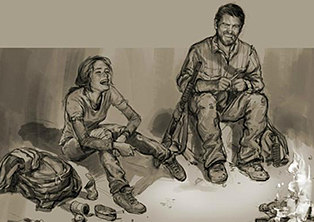
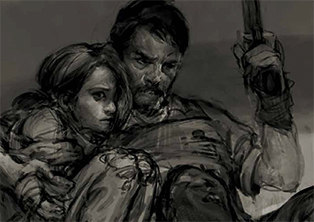
But Druckmann is not aiming for comparisons; he wants The Last of Us to stand on its own as an example of a story that could not have been told in any other way, through any other medium. That's why he has given Joel and Ellie specific roles as characters: Joel--the only playable character in the game--is the practical type. He approaches each environment with caution, taking measures to ensure safety. He takes care of the scavenging and the worrying about how to stay alive from day to day. Ellie's role is to give you another perspective. She lets you see the world through the eyes of someone who has never witnessed natural beauty before: she will spend time noticing the sky reflected in puddles of water, the trees growing at odd angles from cracks in the pavement, the billboards and advertisements from a time and place she never knew. "Once Ellie leaves the quarantine zone, it's like she's in Disneyland," Druckmann says. "The game takes time to help players see that it's not always about fighting and survival, that there is time to admire the beauty of the world, damaged as it is."
One of Druckmann's main inspirations for The Last of Us was David Benioff's City of Thieves, a fictional story about two WWII survivors in a Russian city under siege. The story spends most of the time following the survivors as they search for food, but it balances the bleakness of their situation with lighthearted moments that reflect the triumph of the human spirit.
Still, not everyone will be interested in this kind of thing. But Druckmann hopes enough people appreciate a good story to know when to demand more.
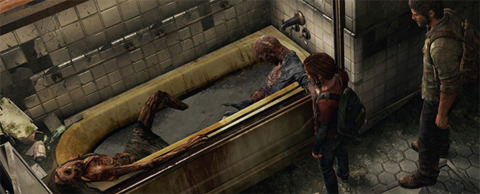
"Steve Jobs once said that consumers don't know what they want until they see it. Once players see a game that has a really well told story, they're going to want more of it. We're all trying to push for this in the industry, to make stories more engaging. I think if we keep going, we'll make more and more games like this."
The Last of Us recently passed its alpha milestone, meaning the game is playable from beginning to end. The next stage of the development cycle will involve the team of a hundred or so programmers, artists, and designers working 12- to 14-hour days until the game is ready to be shipped. All Druckmann will be thinking about for the next four months is lines of dialogue, story points, game mechanics, and, if he gets a chance, Japanese curry.
And after that?
"A very long, well-deserved vacation."
The Last of Us is due out in North America on May 7, 2013.
'Got a news tip or want to contact us directly? Email news@gamespot.com
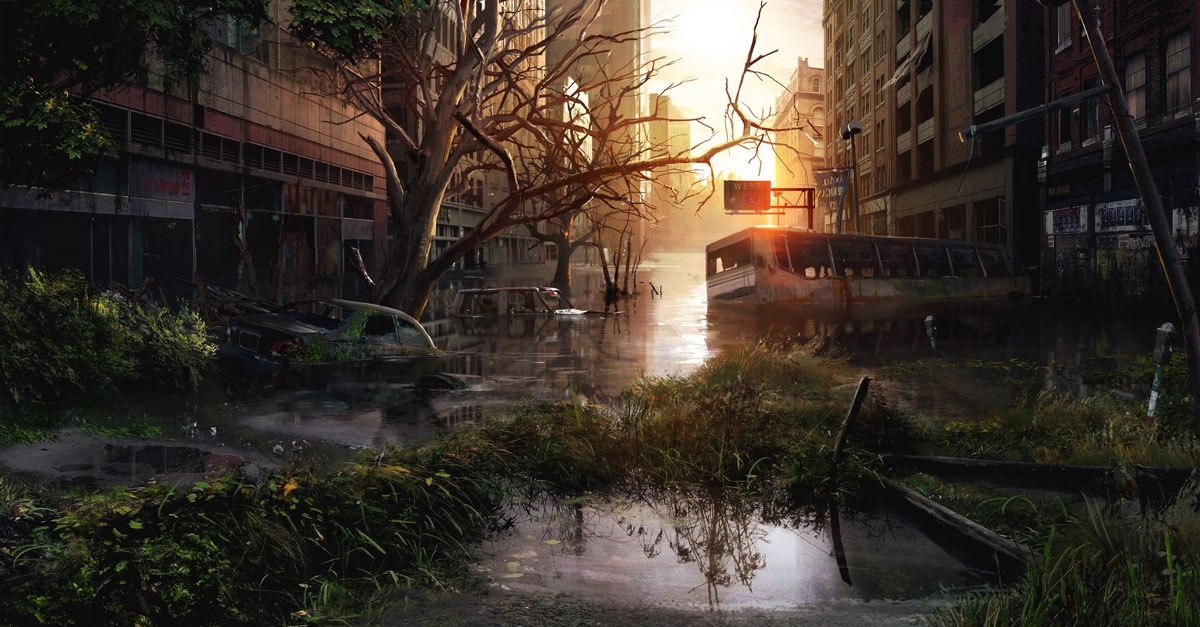
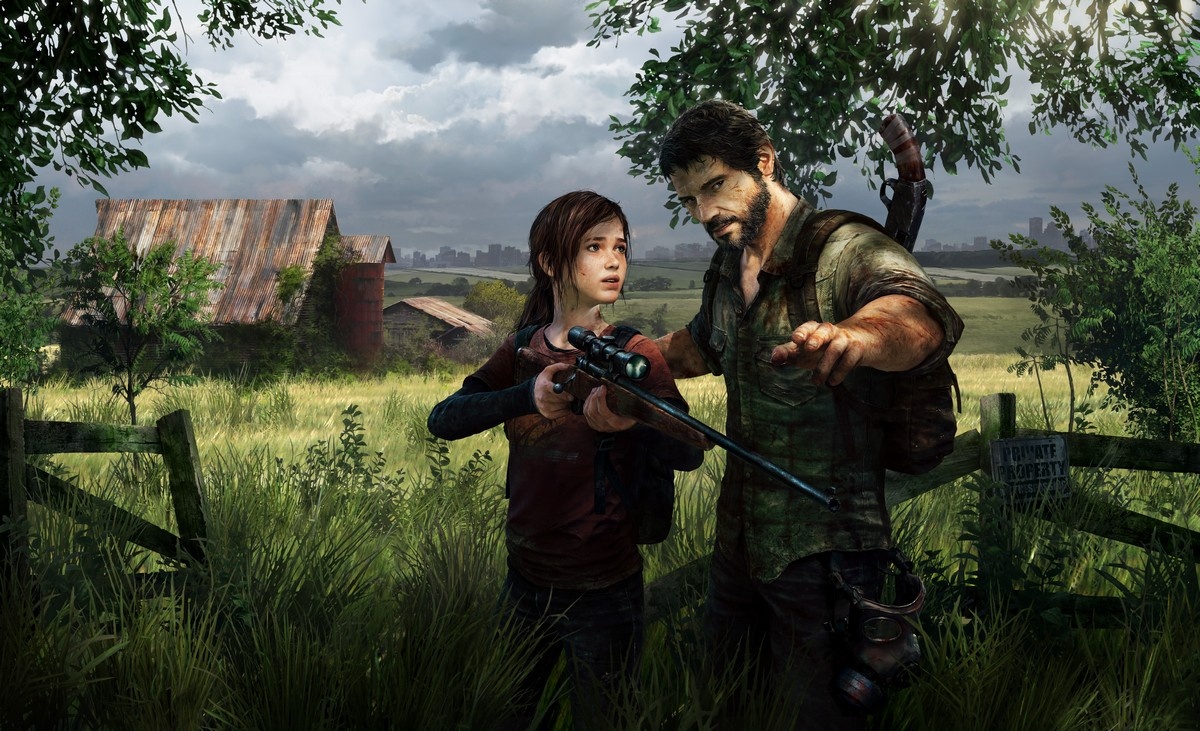
Join the conversation